
Like gardeners who wouldn't dare go outside without applying a generous layer of sunblock, plants have devised many ways to protect themselves from scalding sun and moisture-stealing wind. One of their most common defenses is to guard their leaves and stems with layers of fine hairs. Even the finest of these hairs function by casting shade to cool plant tissue and slow evaporation. The second word of a plant's scientific name sometimes reflects the botanical term for the type of fine hairs it has.
Arachnoid Hairs
Video of the Day
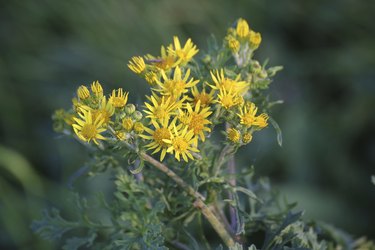
Think cobwebs, and you have arachnoid plant hairs that often tinge plants with gray. In late spring, for example, prairie ragwort's (Packera plattensis, Senecio plattensis) clumps of toxic, arachnoid grayish-green foliage produce golden-yellow daisy-like flowers. Arachnoid hairs also cloak cobweb thistle's (Cirsium occidentale) whitish flower buds. Combined with its bristly, cherry-red blossoms and wooly, silver leaves, they make an unforgettable picture. These perennials are suitable for U.S Department of Agriculture plant hardiness zones 3 through 9 and 7 through 10, respectively.
Video of the Day
Ciliate Hairs

Fine, ciliate hairs lining its leafstalks give fringed loosestrife (Lysimachia ciliata) its common name. Golden-yellow flowers -- often with rust-red centers -- nod at the bases of its leaves in summer. Up to 4 feet tall, the branching perennial grows in USDA zones 3 through 9. Ciliate hairs also fringe fleabanes' (Erigeron spp.) green, tapering leaves. Hardy in USDA zones 2 through 8, depending on species, fleabanes grow from 9 to 30 inches tall. Their clusters of yellow-centered, white, pink, blue or purple daisies bloom from midsummer into fall.
Hoary Hairs
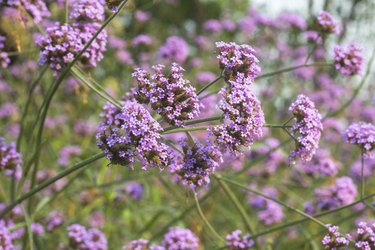
Short, fine hoary hairs also give plants a grayish cast. These hairs cover hoary skullcap's (Sculletaria incana) erect stems of tubular, purple-blue flowers and serrated green leaves. Hardy in USDA zones 5 through 8, the 3-foot perennial blooms in summer. Hoary vervain (Verbena stricta) pairs clumps of oval grayish-green leaves with pencil-thin spires of blue-violet flowers. The blossoms open in ascending order from May to September. Hoary vervain grows in USDA zones 4 through 7.
Pilose Hairs
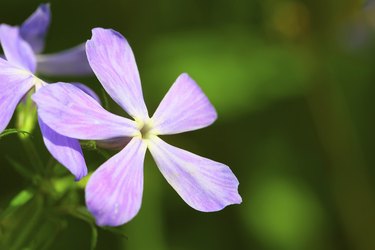
Straight, soft pilose hairs cover prairie phlox' (Phlox pilosa) stems, leaves and flower tubes. In spring and summer, its pink or lavender blooms' contrasting throats guide hummingbirds and butterflies to their fragrant nectar. The compact phlox grows in USDA zones 4 through 9. Shaggy blazing star (Liatris pilosa) has spikes of hair-covered, pinkish-purple blooms that open in clusters from late summer into fall. The blossoms' long, arching styles give the plant a shaggy look. Grow it in USDA zones 6 through 9.
Sericeous Hairs
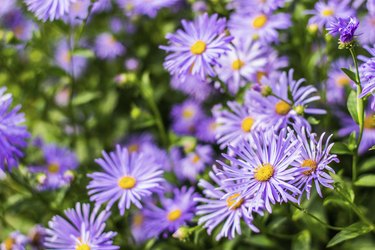
Named for the fine hairs lying flat against their leaves and stems, silky lupine (Lupinus sericeus) and silky aster (Symphyotrichum sericeum, Aster sericeus) grow in USDA hardiness zones 4 through 8 and 2 through 9, respectively. Toxic, 1- to 2-foot silky lupine has round, compound green leaves with fingerlike leaflets and summer-long spikes of blue or purple blooms. Silky aster's clusters of dainty, yellow-centered, blue-violet flowers open from late summer to mid-fall. The daisy blooms top1 1/2- to 2 1/2-foot stems of silvery-green leaves.
Villous Hairs
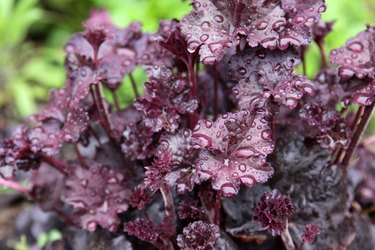
Fine villous hairs form soft, shaggy layers on hairy alumroots' (Heuchera villosa) stems and leafstalks Grown in USDA zones 3 through 8 for its maplelike foliage and mid- to late-summer spires of airy pink or white flowers, the mounding perennial reaches 18 to 30 inches tall. Drought-tolerant coyote mint (Monardella villosa), found in USDA zones 7 through 10, has hairy, grayish-green foliage valued for its deer-repelling mint aroma. At 2 feet tall with, and equal spread, it's an attractive dryland groundcover -- especially in July and August, when powderpuff, lavender-blue flowers nearly conceal the leaves.
- Wayne's World: Botany 115 Terminology -- Leaf Terminology (Part 2)
- Plants of the Eloise Butler Wildflower Garden: Prairie Ragwort
- Illinois Wildflowers: Senecio Plattensis
- Lady Bird Johnson Wildflower Center: Lysimachia Ciliata
- University of Vermont Department of Plant and Soil Sciences: Erigeron
- Missouri Botanical Garden: Scutellaria Incana
- Missouri Botanical Garden: Verbena Stricta
- Missouri Botanical Garden: Phlox Pilosa
- Plants of the Eloise Butler Wildflower Garden: Shaggy Blazing Star
- Missouri Botanical Garden: Heuchera Villosa